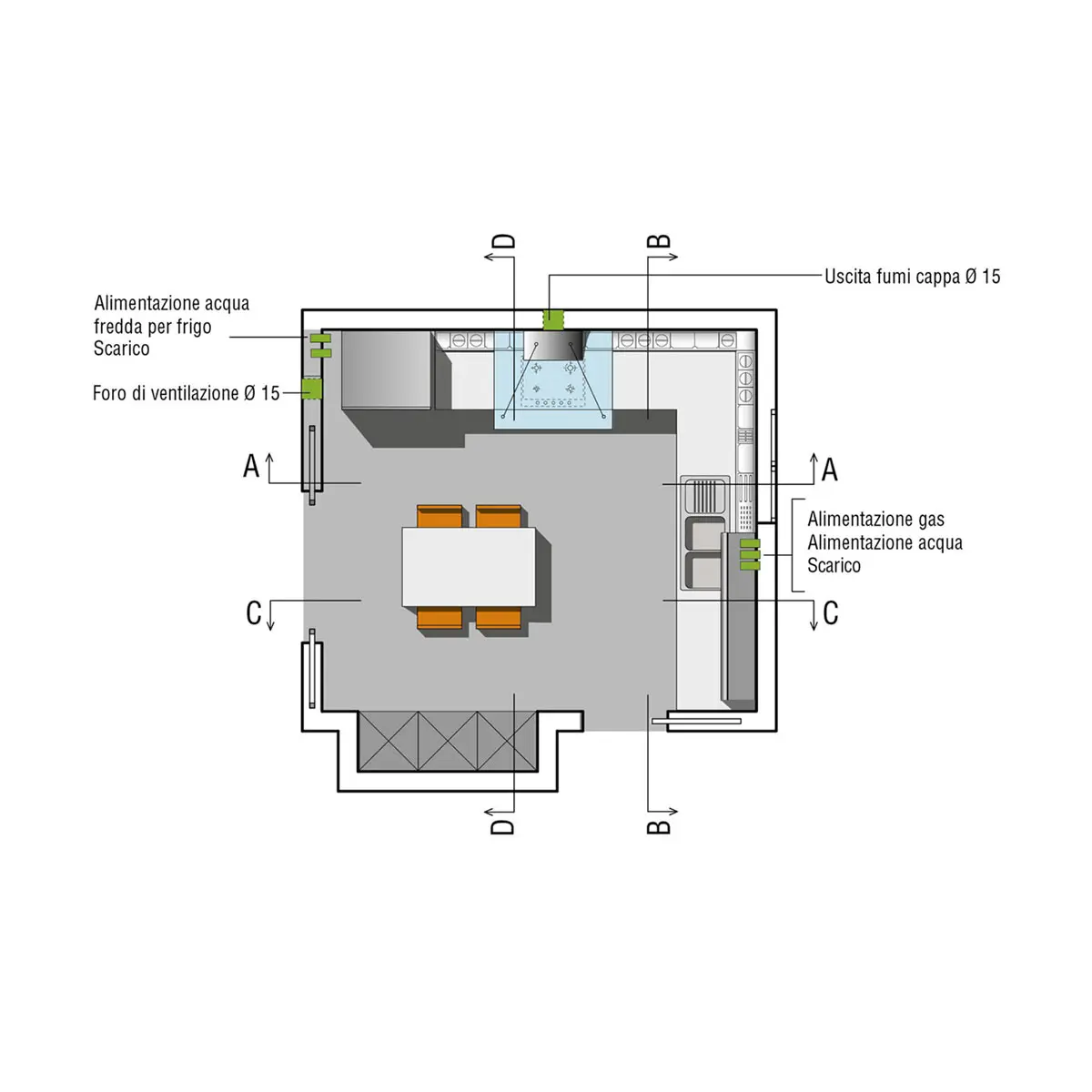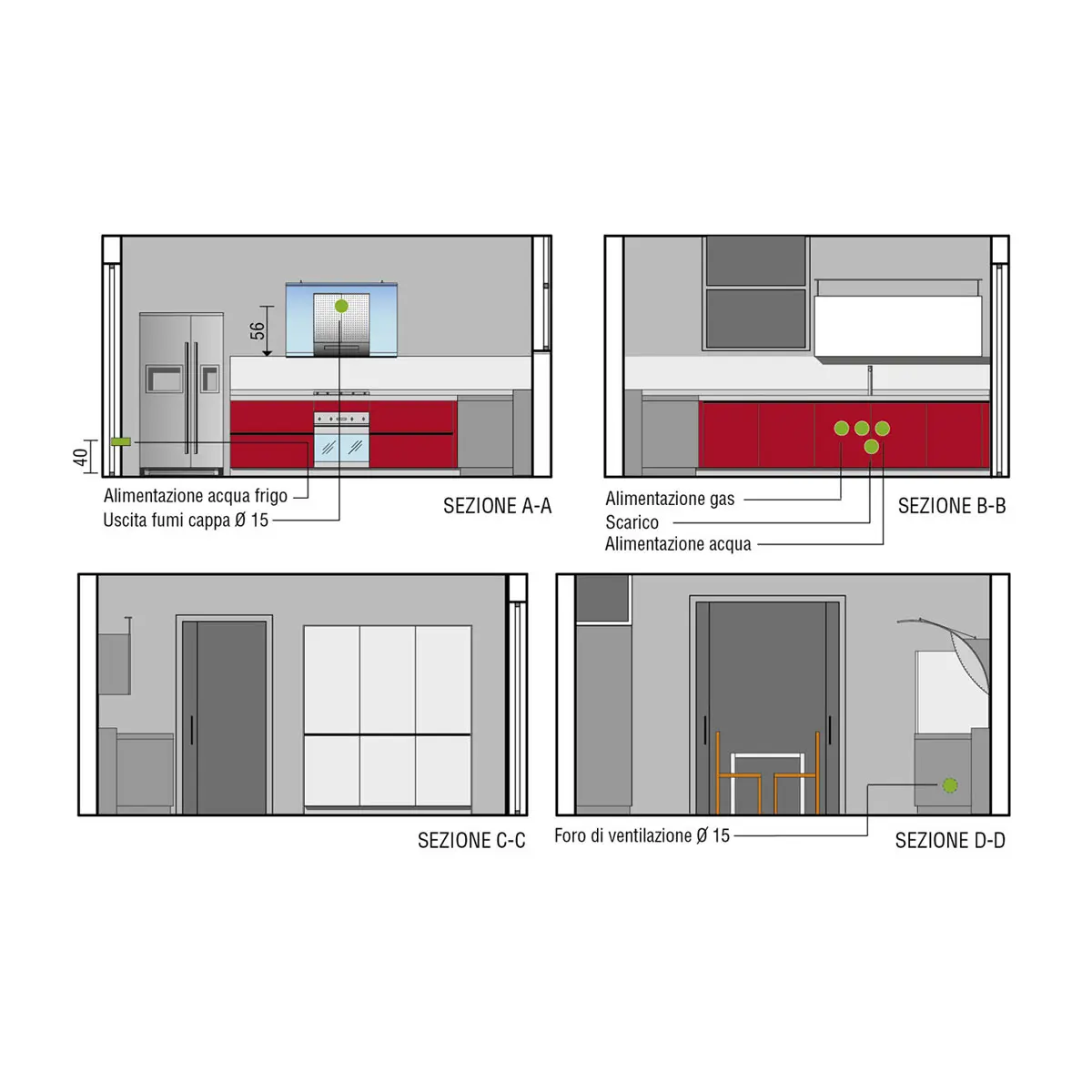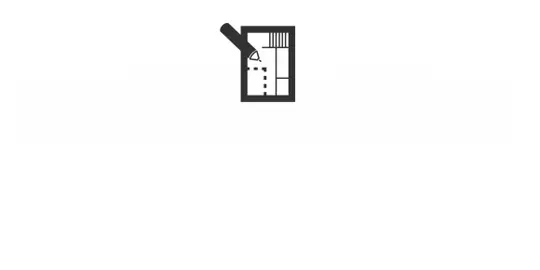Corner kitchen
Continuity to reduce distances
The elements are installed along two adjoining kitchen walls. The sink, the hob and the fridge must be relatively near to each other so as to reduce distances and make it easier to carry out various kitchen chores.
Due to the fact that it is arranged on two adjoining sides, the corner kitchen must be planned by creating logical connections between the various functional areas to make work in the kitchen run as smoothly as possible. A perspective view shows the real space, allowing you to assess the position of the single elements, the colour scheme, the combination of materials and the lighting.
Electric System
The electric system can be defined only after the exact position of all the units, of the appliances and of the table have been decided. The plan of the electrical system has the aim of precisely defining all the light points, the sockets, the intercom connections, the thermostats, the telephone and the TV antenna sockets. This is the only way for the electrician to create a rational and aesthetically pleasing system. Often household appliances are connected to sockets located behind the furniture, at 17.5 cm from the floor, making them difficult to access. To guarantee practical socket inspection it is advisable to collect them all together in a single electric board located behind the sink base unit, the only one without a back panel. It is from here that the various power supply lines for appliances and for the back section are managed. It is a good idea to divide the sockets in the electric board and give each a separate switch to prevent a failure of one appliance jeopardising the use of all the other sockets. It is advisable to provide for a cable outlet concealed behind the wall units for a light or for a midway socket. If a back section is not fitted, provide for sockets on the back panel of the kitchen to connect small appliances. For safety reasons it is best to keep sockets at a minimum distance of 60 cm from the hob and sink. Due to the fact that the kitchen can also be illuminated by the hood light and by the lights at the bottom of the wall units it is a good idea to collect their power supply under a single switch located on the back panel of the kitchen. The cable outlet for the hood must be selected in compliance with the type of hood chosen and is usually located just above the appliance so that it becomes invisible.
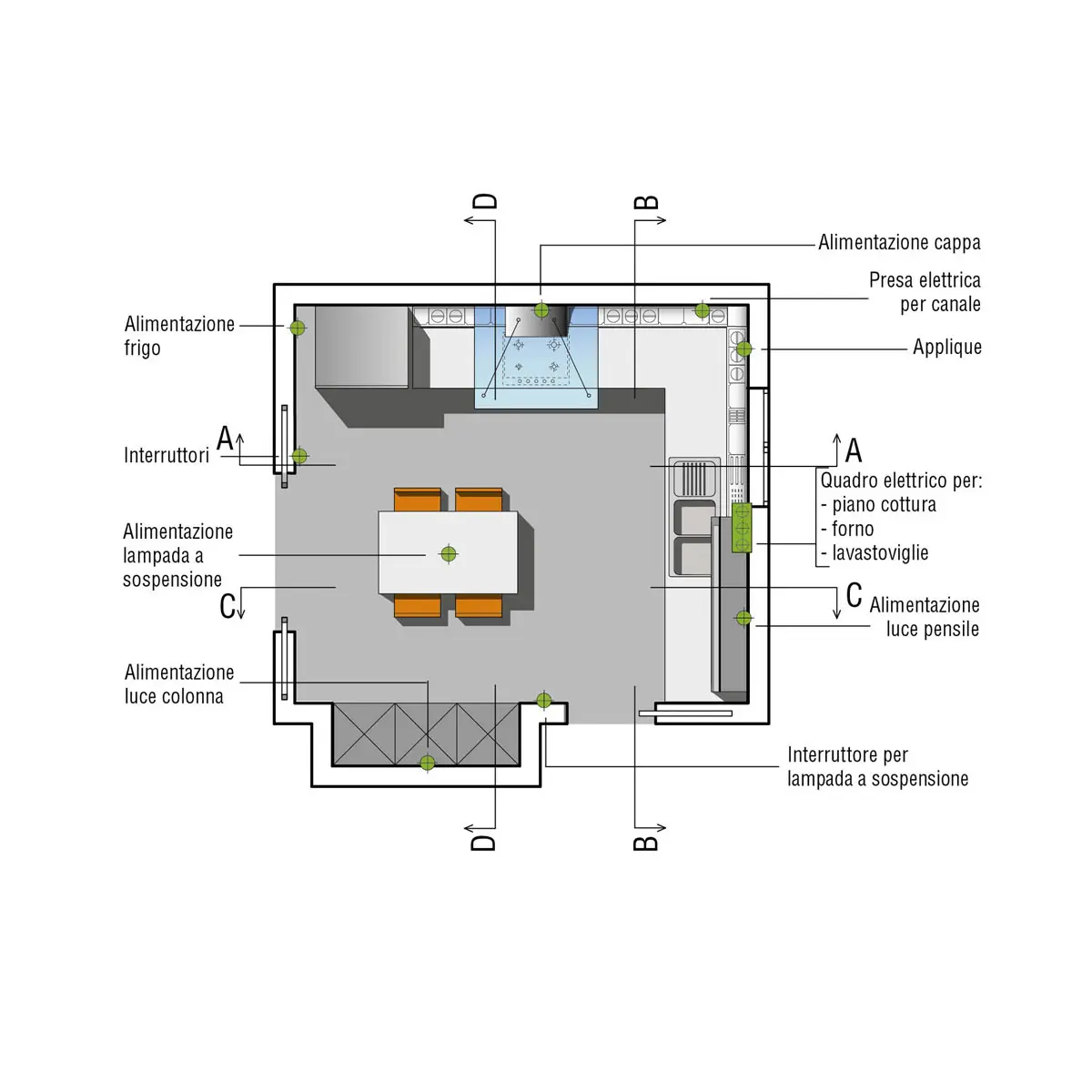
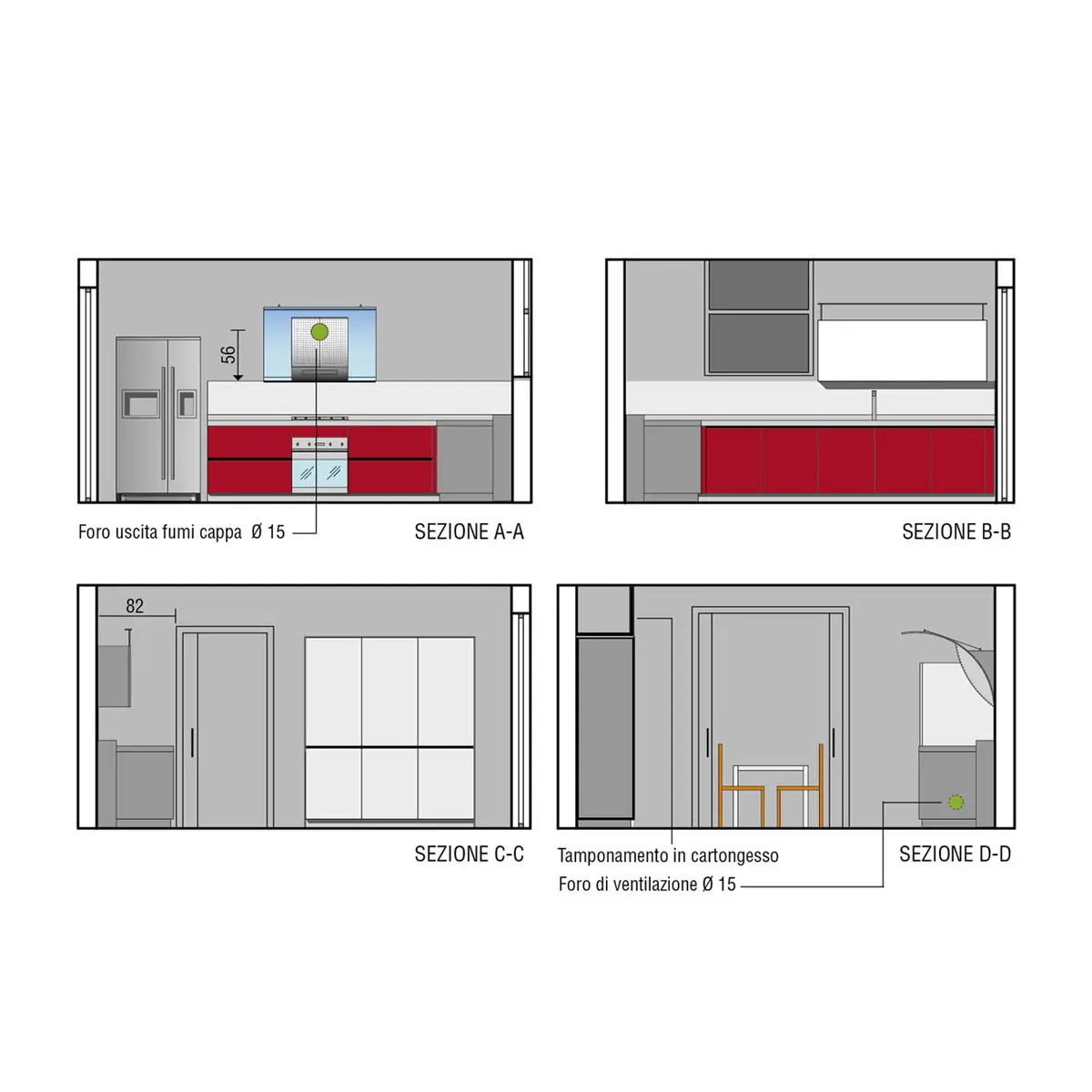
Architectural Project
Often one finds oneself in the position of planning kitchen furniture after the kitchen has already been built and the walls have been constructed in an irrational way, with drains and electric sockets that do not follow a logical kitchen project. The inevitable consequence is that the kitchen furniture has to be adapted to the architecture which often calls for costly custom-sized units. The correct method is to plan the kitchen furniture first by defining the position of each element and the exact size of the modules.
For a corner kitchen, first of all the perfect perpendicularity of the two adjacent walls must be checked, and these must be measured at a height of 90 cm, to avoid major problems during assembly. When planning kitchen furniture it is necessary to consider a tolerance of +1cm for possible imperfections in the straightness of the walls, and +1cm thickness for possible wall claddings. If you want to add a free- standing fridge with a water and ice dispenser it is necessary to plan a space sufficient for the convex door to open properly as well as for the socket and the water supply/drain tap to be located near the appliance. Another very important element to consider is the size of the side panel against a door: it is calculated by adding +2cm to the depth of the kitchen up to the door frame. To install a worktop under the window, it is necessary to calculate the right height of the window sill and the position of the tap. If the hood is wall-hung, it is advisable to make a fumes outlet hole on the same wall; its position will vary depending on the type of hood chosen. On either side of tower units a plasterboard wall creates an alcove-fitted effect. This must be made-to-measure after the tower units have been installed.
For a corner kitchen, first of all the perfect perpendicularity of the two adjacent walls must be checked, and these must be measured at a height of 90 cm, to avoid major problems during assembly. When planning kitchen furniture it is necessary to consider a tolerance of +1cm for possible imperfections in the straightness of the walls, and +1cm thickness for possible wall claddings. If you want to add a free- standing fridge with a water and ice dispenser it is necessary to plan a space sufficient for the convex door to open properly as well as for the socket and the water supply/drain tap to be located near the appliance. Another very important element to consider is the size of the side panel against a door: it is calculated by adding +2cm to the depth of the kitchen up to the door frame. To install a worktop under the window, it is necessary to calculate the right height of the window sill and the position of the tap. If the hood is wall-hung, it is advisable to make a fumes outlet hole on the same wall; its position will vary depending on the type of hood chosen. On either side of tower units a plasterboard wall creates an alcove-fitted effect. This must be made-to-measure after the tower units have been installed.
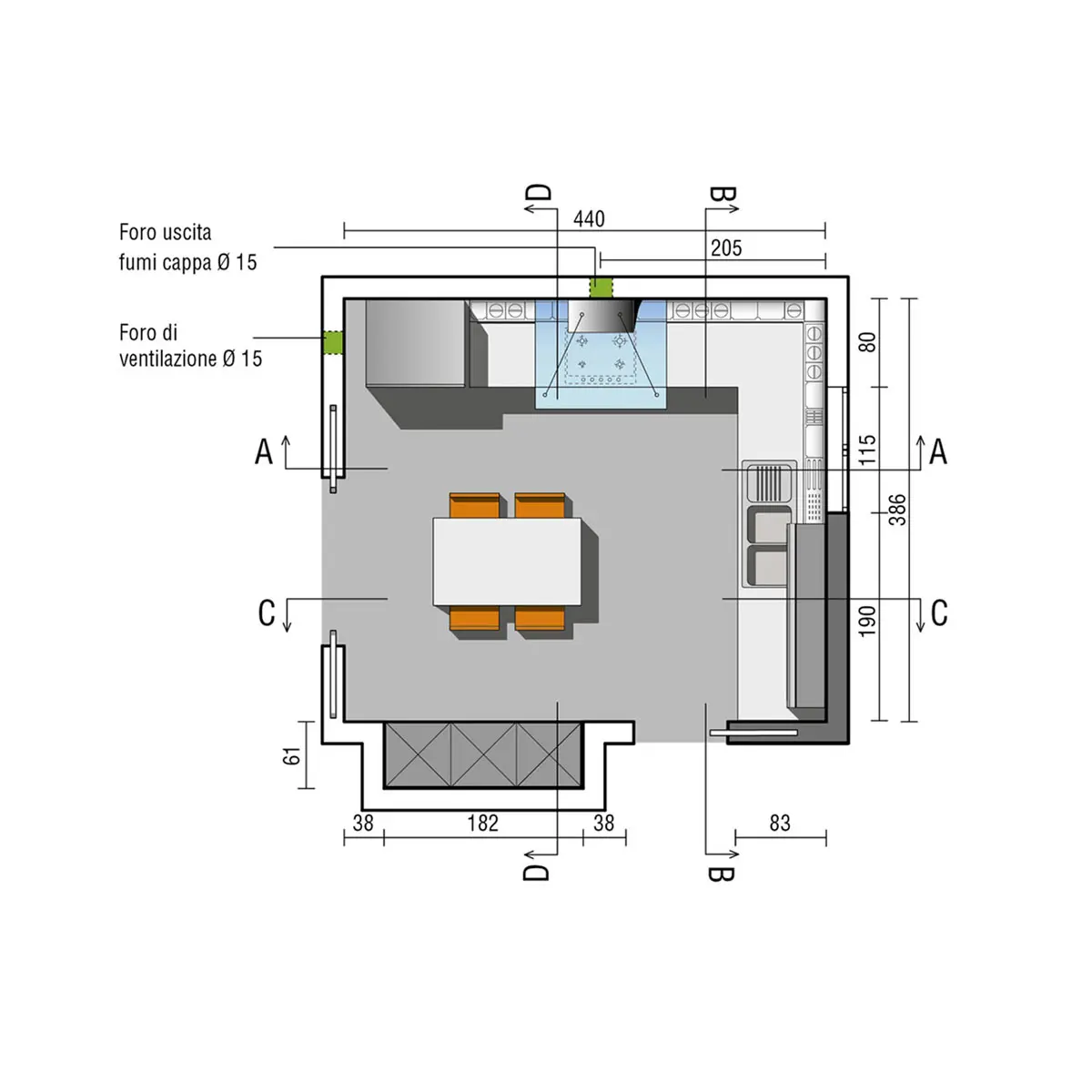
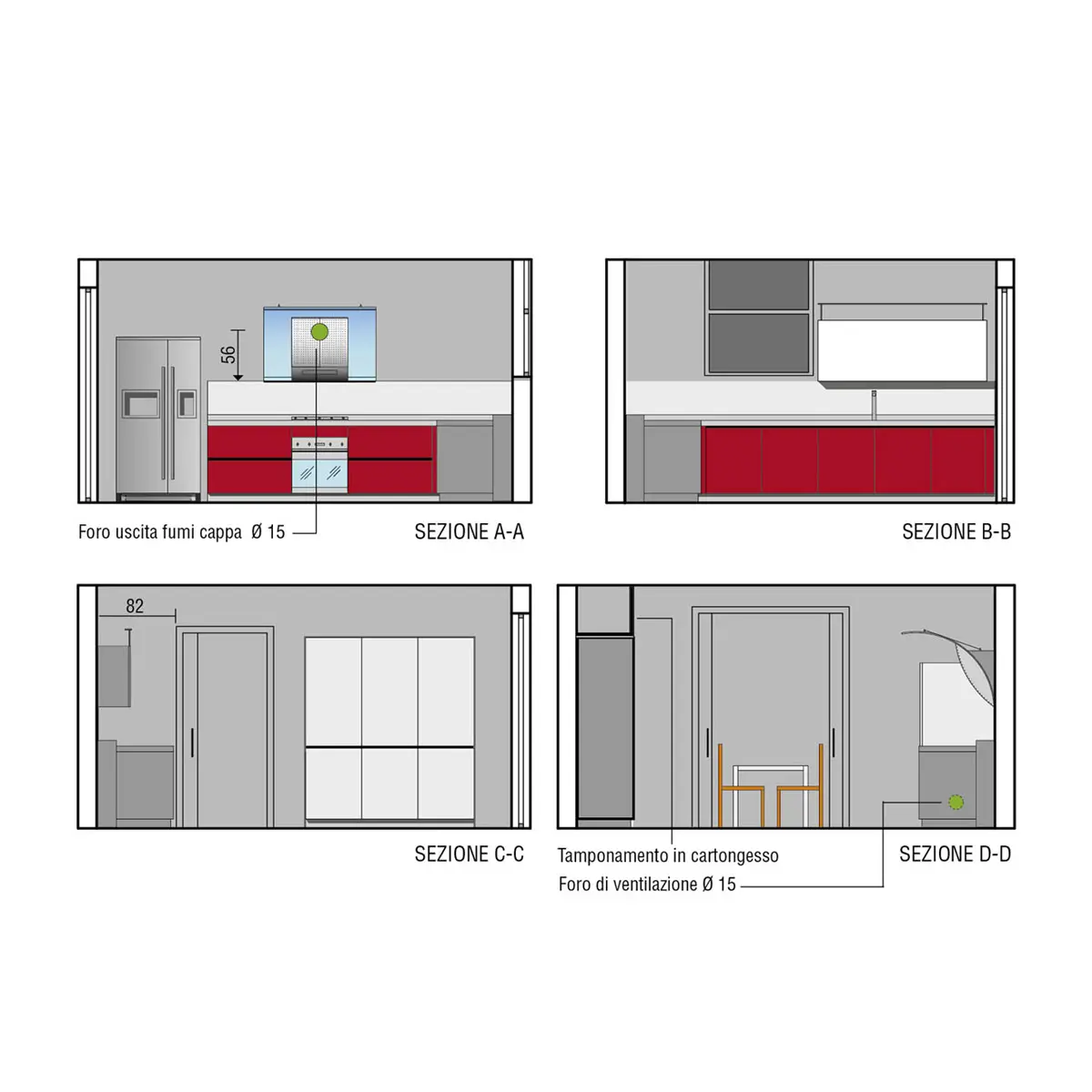
Plumbing System
The fridge with a water and ice dispenser requires an electric socket located alongside the appliance. It is of fundamental importance o decide the position of the units and of the appliances before planning the plumbing system of a corner kitchen, especially if you want to fit special appliances such as an American-style refrigerator. To install this type of fridge with an automatic water and ice dispenser it is necessary to plan for a water supply/drain tap beside the appliance. The connection pipe must be made from a foodsafe material. By adding the back section, it will be possible for the water and gas pipes to come out at any point in the wall behind the kitchen. Nevertheless, it is a good idea or the pipes to come out of the wall behind the sink base unit because it is the only readily accessible unit without a back panel. From here and through the back section, the gas pipe can reach the hob. The back section can also contain the gas safety cock.
